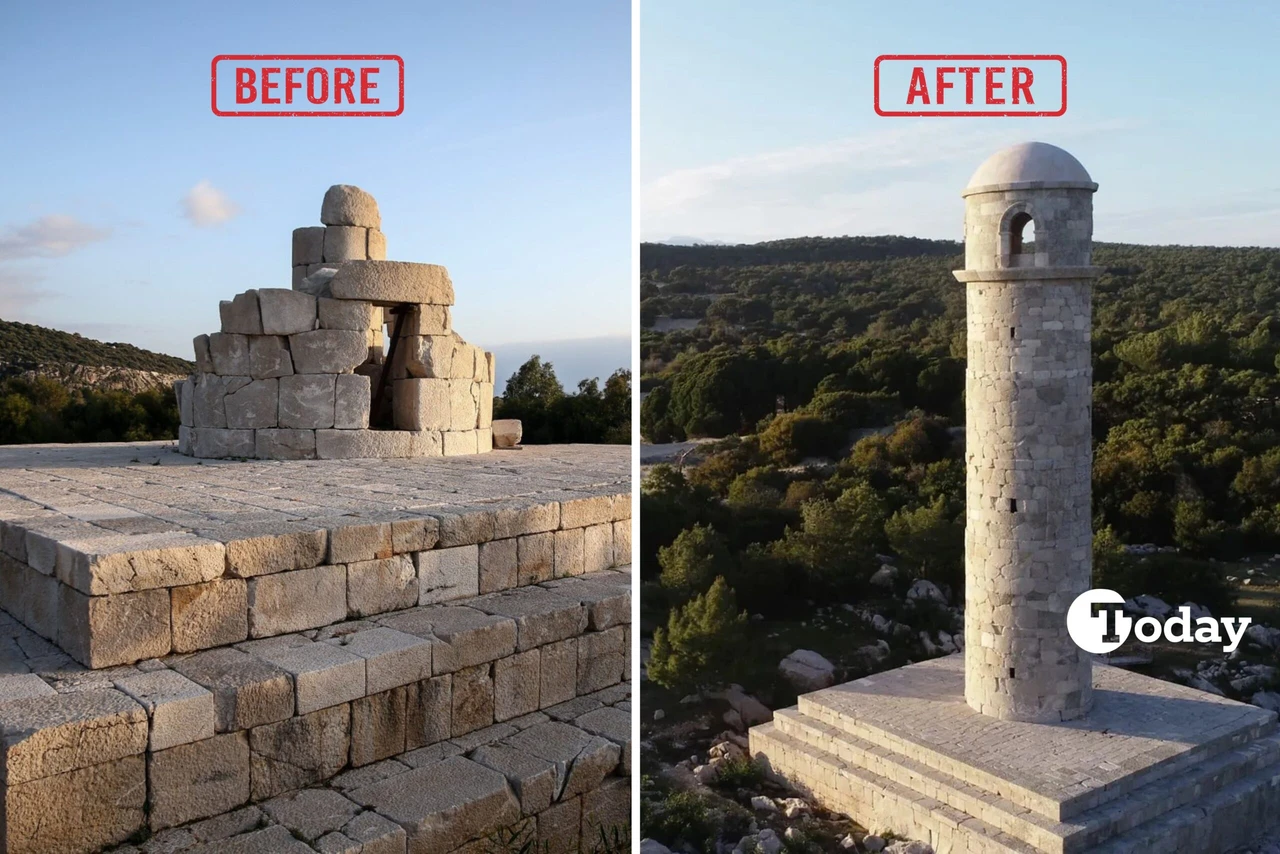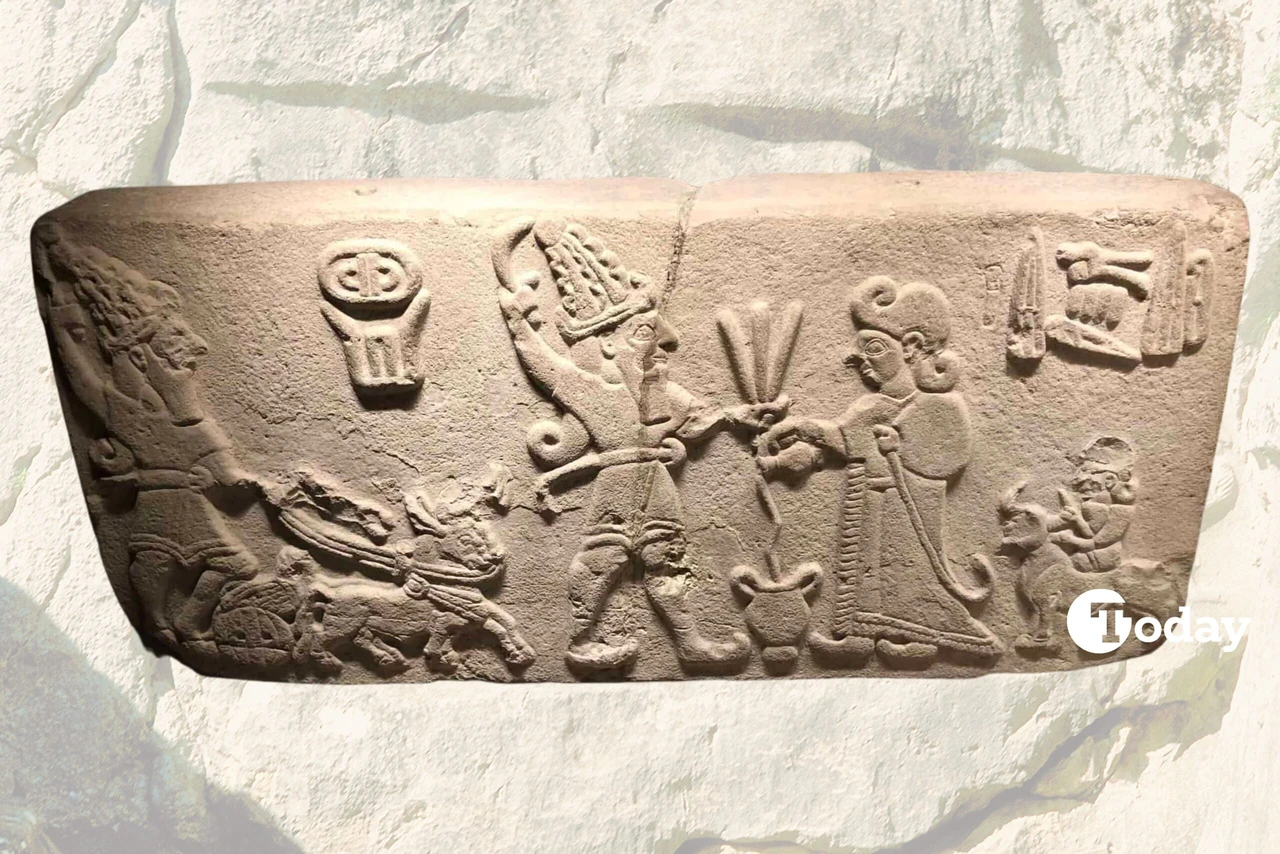Closer look at Lebanon’s military might amid Hezbollah-Israel conflict
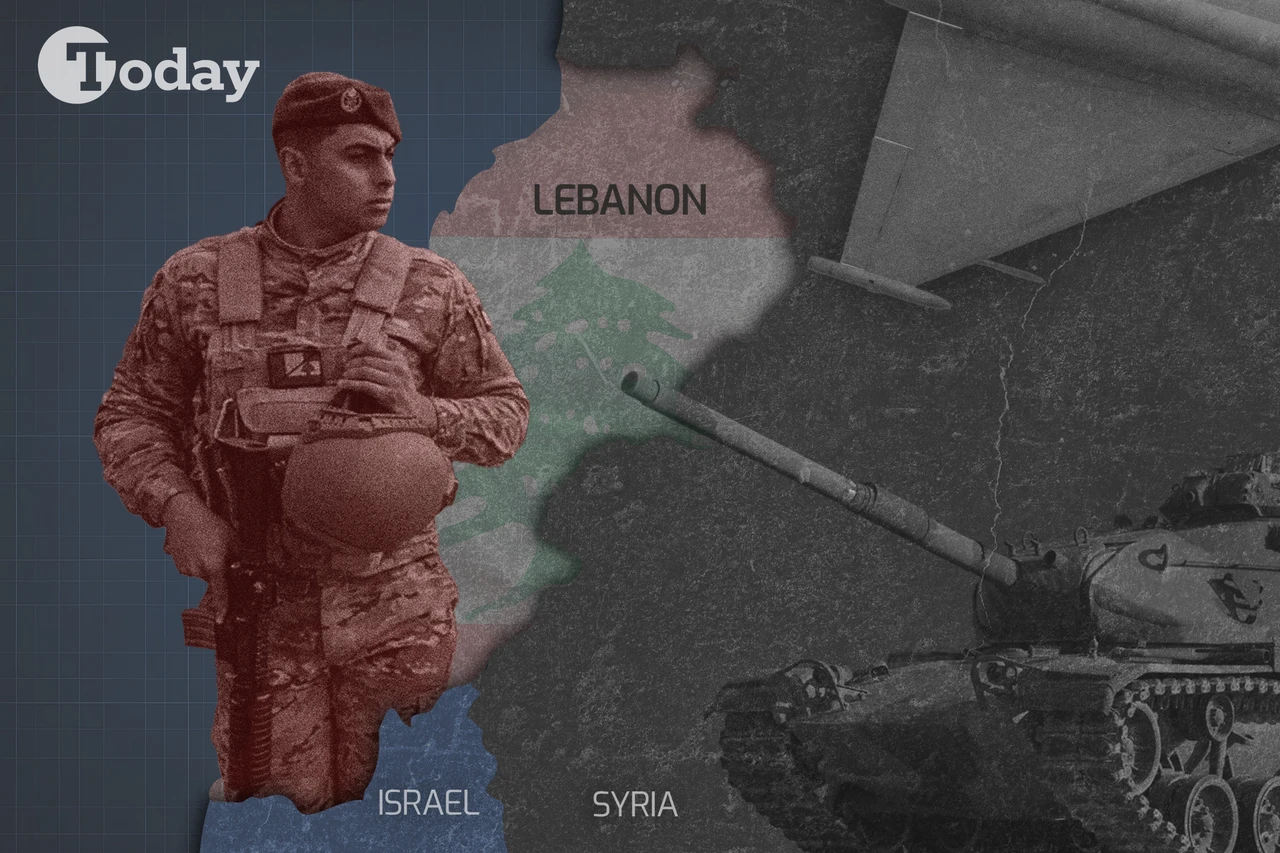 A collage shows a map where Lebanon, Israeland Syria can be seen along with an Lebanese soldier. (Collage by Mehmet Akbas/Türkiye Today)
A collage shows a map where Lebanon, Israeland Syria can be seen along with an Lebanese soldier. (Collage by Mehmet Akbas/Türkiye Today)
The Lebanese Armed Forces (LAF) comprises three main branches: ground forces, the air force and the navy.
They are responsible for defense, internal security and national development.
Despite significant political and economic challenges, the LAF remains crucial for maintaining Lebanon’s sovereignty and stability.
Post-2005 progress, challenges
Since the withdrawal of Syrian troops from Lebanon in 2005, the Lebanese Armed Forces (LAF) has evolved into a more professional and capable military force. However, it continues to face challenges in curbing the influence of entrenched political factions and preventing political interference within its ranks.
Aram Nerguizian, a senior advisor on civil-military relations in Arab states at the Malcolm H. Kerr Carnegie Middle East Center, noted that despite these advancements, the LAF “has failed to curtail the autonomy of Lebanon’s political forces, and it has struggled to stave off political penetration of military ranks.”
The CIA World Factbook reports that as of 2024, the LAF consists of approximately 73,000 active-duty personnel, with 70,000 in the army, 1,500 in the navy, and 1,500 in the air force.
Notably, the LAF is entirely volunteer-based. Its headquarters is located in Yarze, a town in the southeastern district of Beirut, the capital of Lebanon.
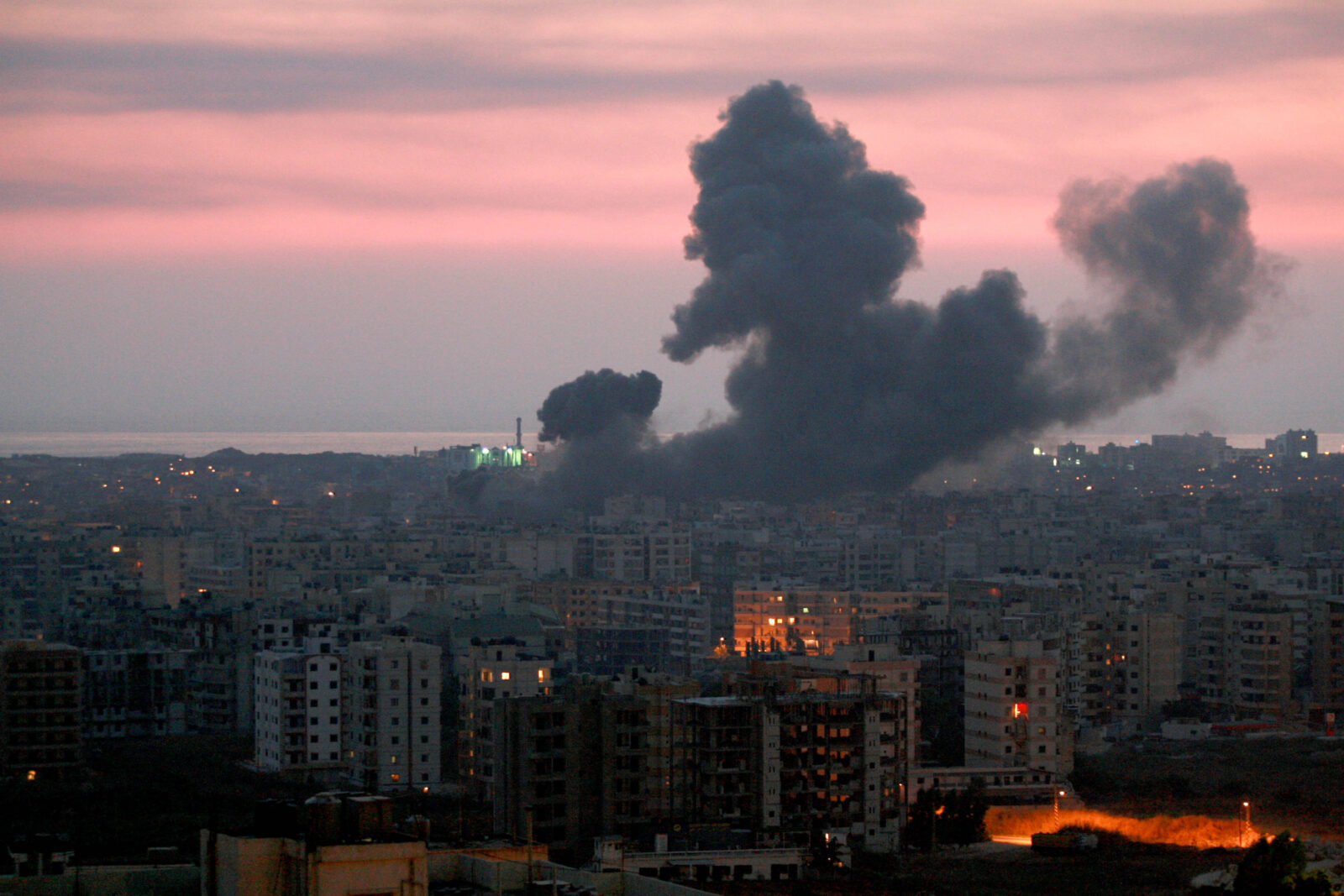

Military structure, responsibilities
The LAF Command includes various specialized units, such as the Presidential Guard Brigade and Land Border Regiments.
The Ministry of Interior also manages the Internal Security Forces Directorate, responsible for law enforcement, including the Mobile Gendarmerie.
The Directorate for General Security (DGS) handles border control and domestic security duties, while the Parliamentary Police Force, under the Speaker of Parliament, protects parliamentary premises and the Speaker’s residence. Both the LAF and Internal Security Forces contribute personnel to this force.
The LAF’s primary responsibilities include defense against external threats, border security, protecting territorial waters and assisting with internal security.
Additionally, the LAF is involved in various development projects and humanitarian relief operations in coordination with public institutions.

Sanctions against Lebanon
Australia: An arms embargo has been imposed as part of the sanctions. It is prohibited to supply, sell or transfer (directly or indirectly) arms or related material to Lebanon, or to provide any technical training or assistance related to the provision, manufacture or use of such sanctioned goods.
Arms or related materials include, but are not limited to, weapons, ammunition, military vehicles and equipment and spare parts or accessories for any of those things. It also includes paramilitary equipment.
Sweden: Sweden’s arms embargo prohibits the sale or supply of arms to individuals, entities, and organizations in Lebanon. This restriction extends to technical and financial assistance, as well as any services related to arms and related material.
However, these prohibitions do not apply to goods or services intended for use by the U.N. Interim Force in Lebanon (UNIFIL) or the Lebanese Armed Forces, nor do they apply if the transaction has been authorized by the Government of Lebanon or UNIFIL.
Canada: Sanctions related to Lebanon were enacted under the United Nations Act to implement United Nations Security Council Resolution 1701. With certain exceptions, the measures imposed against Lebanon include:
- A prohibition on the export of arms and related material to any person in Lebanon
- A prohibition on the provision to any person in Lebanon of any technical assistance related to the provision, manufacture, maintenance or use of arms and related materials.
An exception to the above prohibitions allows for the arms and related material, as well as associated technical assistance if authorized in advance in writing by the Government of Lebanon or the United Nations Interim Force in Lebanon (UNIFIL).
And there are more countries to count. In 2006, the U.N. introduced an arms embargo and ban on providing related services by U.N. Resolution 1701.
The intention of the measures was to assist the Lebanese government in exercising full sovereignty over its territory and ensure no weapons are in the country without its consent.
Several other countries have also placed sanctions on Lebanon. In 2006, the U.N. introduced an arms embargo and a ban on the provision of related services through U.N. Resolution 1701.
These measures aim to help the Lebanese government exercise full sovereignty over its territory and ensure that no weapons are present in the country without its consent.
The U.K. has also adopted The Lebanon (Sanctions) (EU Exit) Regulations 2020 and The Lebanon (Sanctions) (Assassination of Rafiq Hariri and others) (EU Exit) Regulations 2020 to implement the U.N. Security Council’s sanctions under U.N. resolutions 1636 and 1701.

Military spending, equipment
Military expenditures in Lebanon have fluctuated over the years, accounting for 3.2% of gross domestic product (GDP) in 2021, 3% in 2020, 4.7% in 2019, 5.1% in 2018, and 4.6% in 2017.
The LAF’s equipment inventory includes a mix of mostly older hardware sourced from various countries, with the U.S. being the largest supplier in recent years. However, Lebanon’s ongoing economic crisis has significantly limited its ability to procure new equipment.
Despite these limitations, the LAF has managed to acquire critical military assets over the years. Since 2005, the U.S. has provided Lebanon with over $400 million worth of military equipment, including HMMWV vehicles, Mk19 grenade launchers, AT4 anti-tank weapons and Barrett M107 sniper rifles. In 2009, the U.S. supplied Lebanon with 10 M60 tanks, followed by additional deliveries.
Lebanon also received 12 RQ-11 Raven UAVs, M198 Howitzers, and various other military vehicles and helicopters. Other countries such as France, the U.K., Jordan and Belgium have also contributed equipment and vehicles.
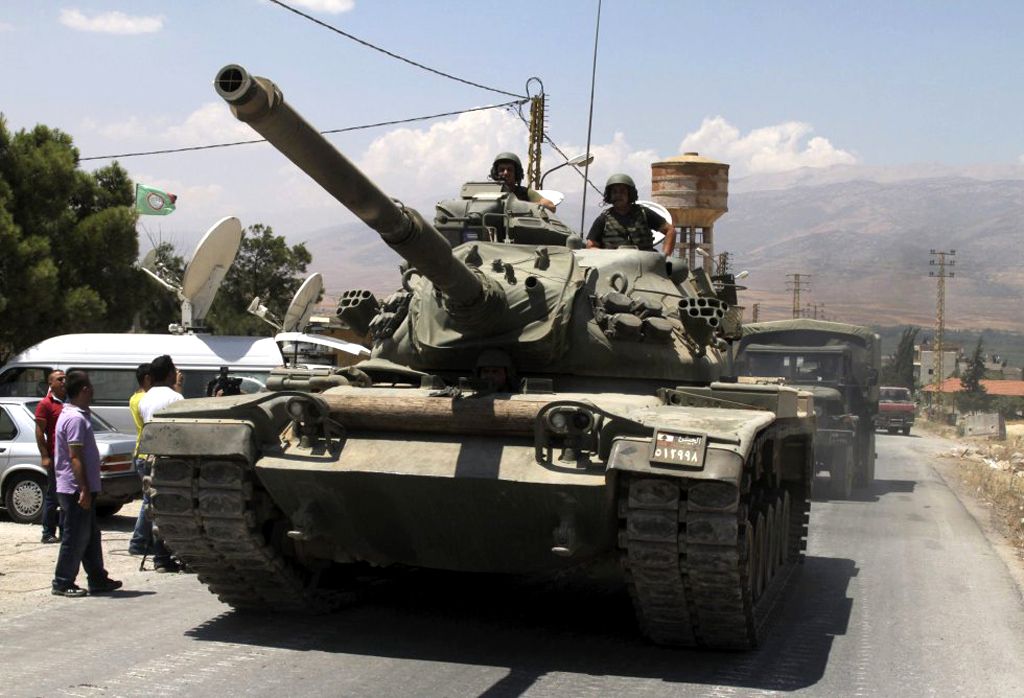
Following the Lebanese Civil War, the LAF sought to repair as much of its equipment as possible, while receiving modest donations from various countries. The United States remains Lebanon’s most significant military partner, with approximately 85% of the LAF’s equipment being U.S.-made, while the remaining 15% is of U.K., French and Soviet origin.
Since 2005, modernizing the LAF has faced hindrances due to budget constraints. Rather than developing an indigenous arms industry, the LAF has relied on donations and affordable foreign equipment. Russia, for instance, agreed in 2010 to supply Lebanon with 31 T-72 tanks and 36 130mm howitzers, along with other munitions and artillery shells.
In February 2021, the Lebanese Army received three Huey II helicopters from the U.S., adding to a list of equipment donations. France has also supported the LAF with equipment such as VAB armored vehicles, HOT missiles and bulletproof vests.
The U.K. has contributed significantly, donating armored vehicle parts worth $1.3 million in May 2023 and 120 Land Rover Defender 90s in December 2013. Other notable donations included M109 155mm self-propelled howitzers from Jordan in 2015 and AIFVs and ambulances from Belgium in 2009.
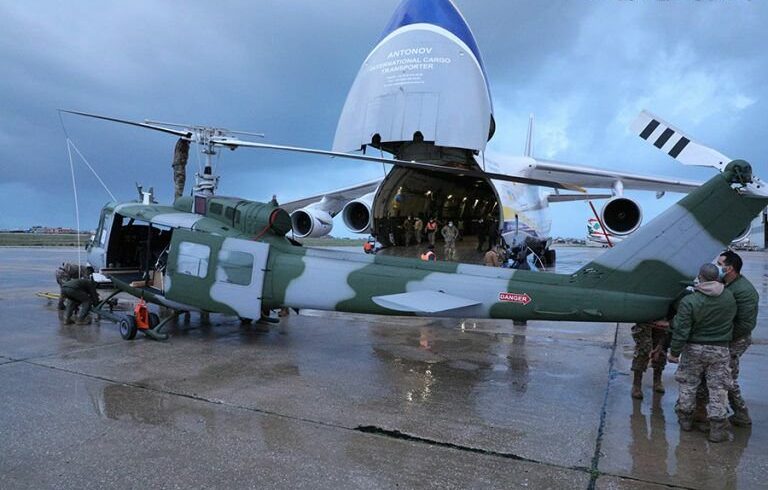
Global ranking and arms imports
According to GlobalFirepower, Lebanon’s Armed Forces were ranked 118th out of 145 countries in 2024 in terms of military strength. While Lebanon may not have the size or resources of larger military powers, the LAF remains crucial for national defense and maintaining internal security.
Lebanon’s defense capabilities have been bolstered through international cooperation and military imports.
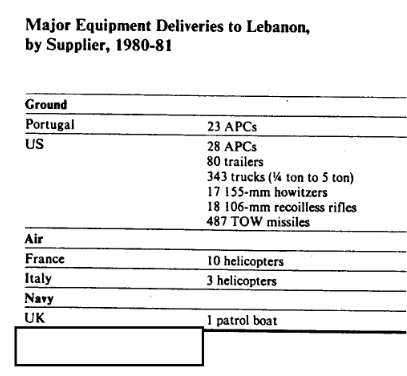
In 2022, Lebanon imported $13.5 million worth of military weapons, making it the 30th largest importer of such goods globally.
The main suppliers were the United States, Czechia and Türkiye. The fastest-growing import markets during this period were the U.S. with an increase of $10.9 million, Czechia with $299,000 and Türkiye with $146,000 boost.
While the country imported significant quantities of military equipment, Lebanon also exported $16,600 in military weapons in 2022, ranking as the 63rd largest exporter. The primary destinations for these exports were Serbia and Ireland, with the fastest-growing export markets being Serbia and Ireland as well.

Military service and volunteering
The LAF recruits men and women between the ages of 17 and 25 for voluntary military service.
Women have been allowed to serve since the 1980s, and in 2023, they made up around 5% of the total force. Lebanon does not implement conscription, and the LAF remains a volunteer-only force.

Challenges on Lebanon’s borders and internal security
The LAF has been actively engaged in operations along Lebanon’s eastern and northern borders with Syria to prevent the infiltration of militants affiliated with Daesh and al-Qaida, following the start of the Syrian civil war in 2011.
In the south, the LAF is focused on maintaining stability along the volatile border with Israel, where tensions periodically flare between the LAF, Israel Defense Forces (IDF) and Hezbollah.
Hezbollah, an Iranian-backed militia, operates largely in southern Lebanon and has maintained significant influence alongside the LAF. The group has launched several cross-border attacks against Israel, most recently during Israel’s ongoing war on Gaza, when Hezbollah fired missiles, rockets, and drones into northern Israel in solidarity with Hamas.
The IDF responded with numerous air strikes against Hezbollah targets in Lebanon. The LAF is not directly involved in these hostilities, but is tasked with maintaining internal stability.
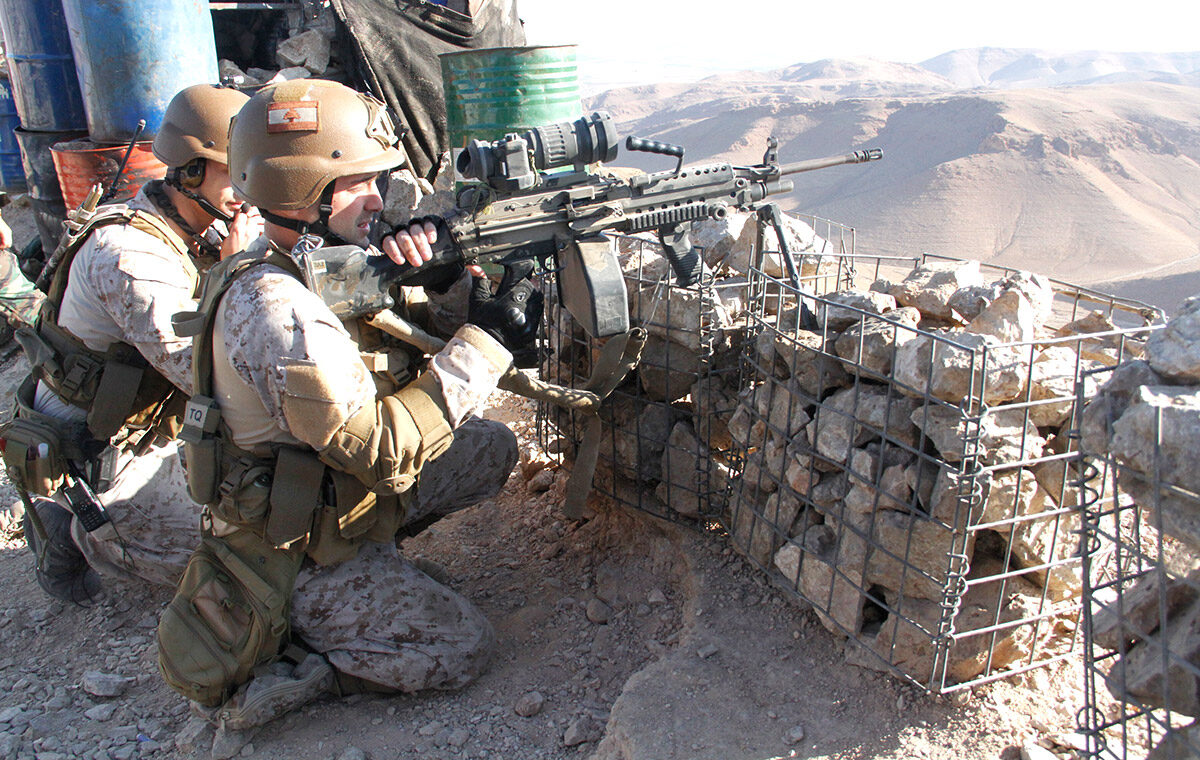
LAF domestic responsibilities and financial crisis
Domestically, the LAF plays a key role in maintaining internal security, countering narcotics trafficking, managing protests and preventing violence between Lebanon’s rival political factions.
However, Lebanon’s financial crisis has taken a toll on the LAF’s ability to fully train, supply, and pay personnel.
This has sparked concerns that the force could disintegrate without external support. In response, the United Nations and countries like France and the U.S. have stepped in with financial assistance to help sustain the armed forces.
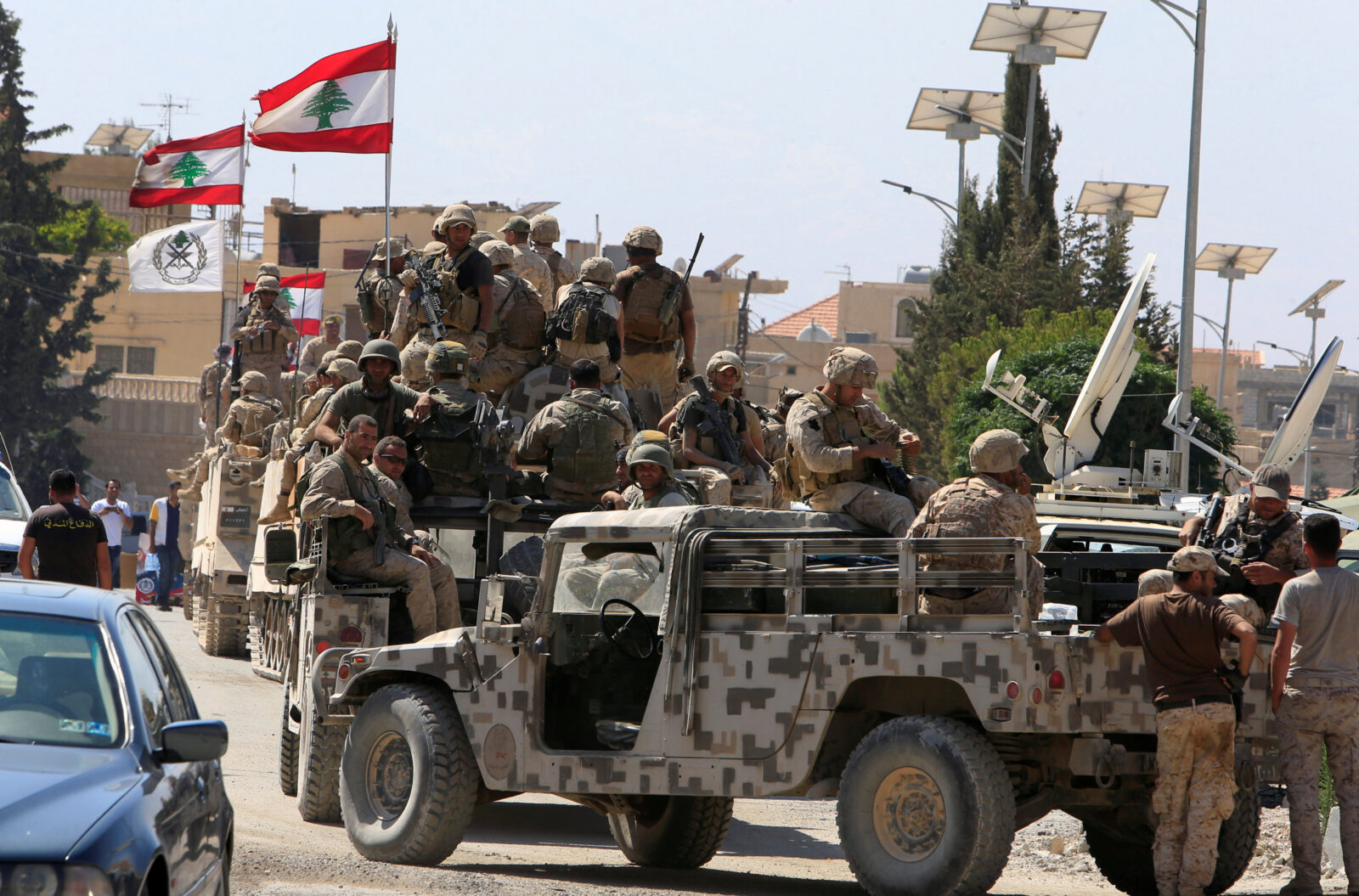
UNIFIL and international peacekeeping
The United Nations Interim Force in Lebanon (UNIFIL) has operated in the country since 1978 to monitor Israel’s withdrawal and assist the Lebanese government in restoring authority in the southern region.
Following the 2006 war between Israel and Hezbollah, the U.N. Security Council adopted Resolution 1701, which expanded UNIFIL’s mandate to include supporting the LAF’s deployment in the south, monitoring hostilities and facilitating humanitarian access for civilians.
As of 2024, UNIFIL has around 9,500 military personnel deployed in Lebanon, including a maritime task force.
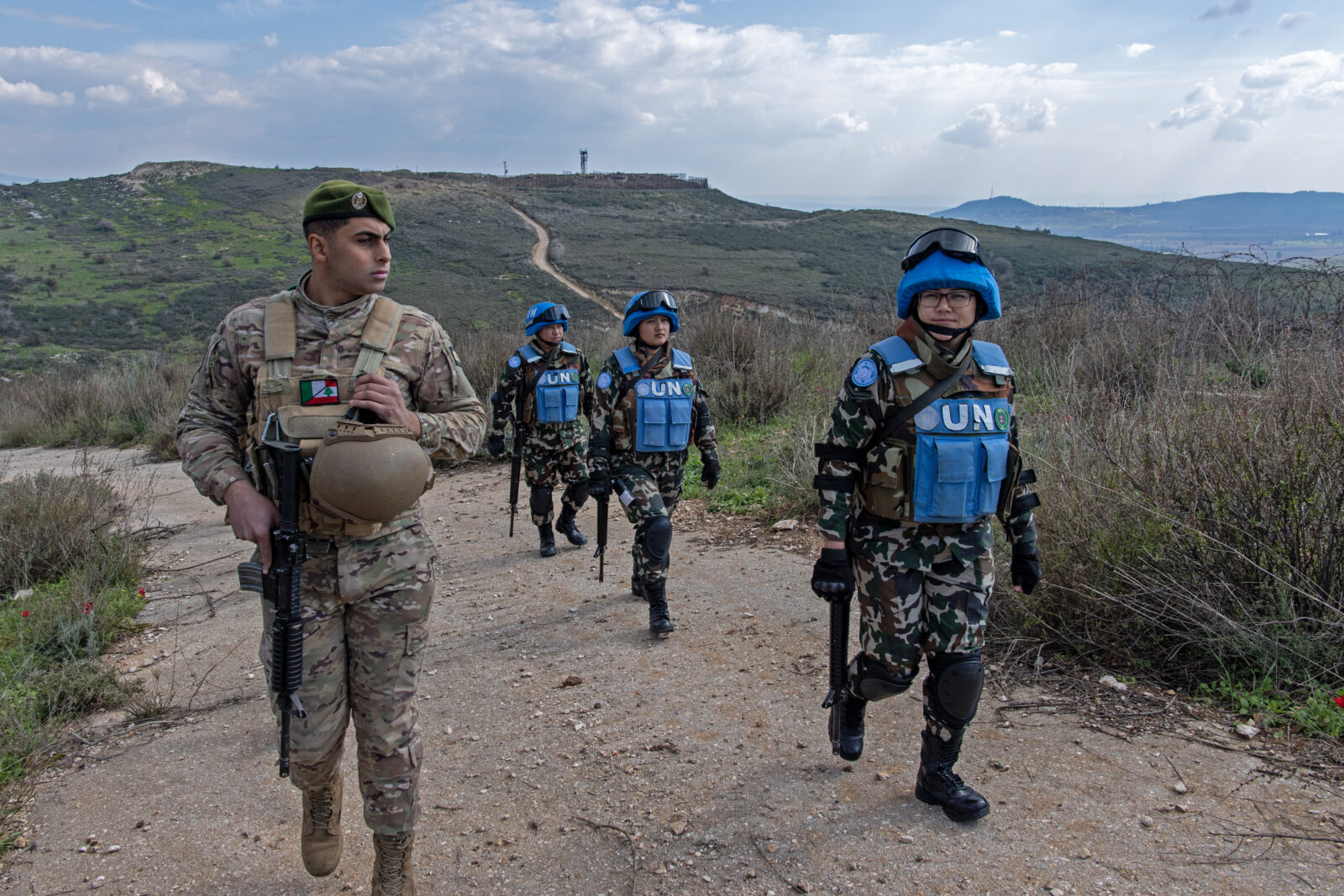
Armed groups operating in Lebanon
Lebanon has several armed organizations operating on their soil, including Hezbollah, Hamas, Daesh and al-Nusrah Front. Hezbollah, which is primarily based in southern Lebanon, has launched periodic attacks on Israel and has maintained a strong militia presence alongside the LAF.
The country also has several Palestinian factions, including the Popular Front for the Liberation of Palestine (PFLP) and its offshoot, the PFLP-General Command. These groups have a presence both inside Lebanon and across its borders.
Other armed organizations with a presence in Lebanon include the Abdallah Azzam Brigades, the Al-Aqsa Martyrs Brigade, Asbat al-Ansar, and the Islamic Revolutionary Guard Corps/Quds Force. Each of these groups operates with varying degrees of influence and different areas of focus, from militant operations to political activities.
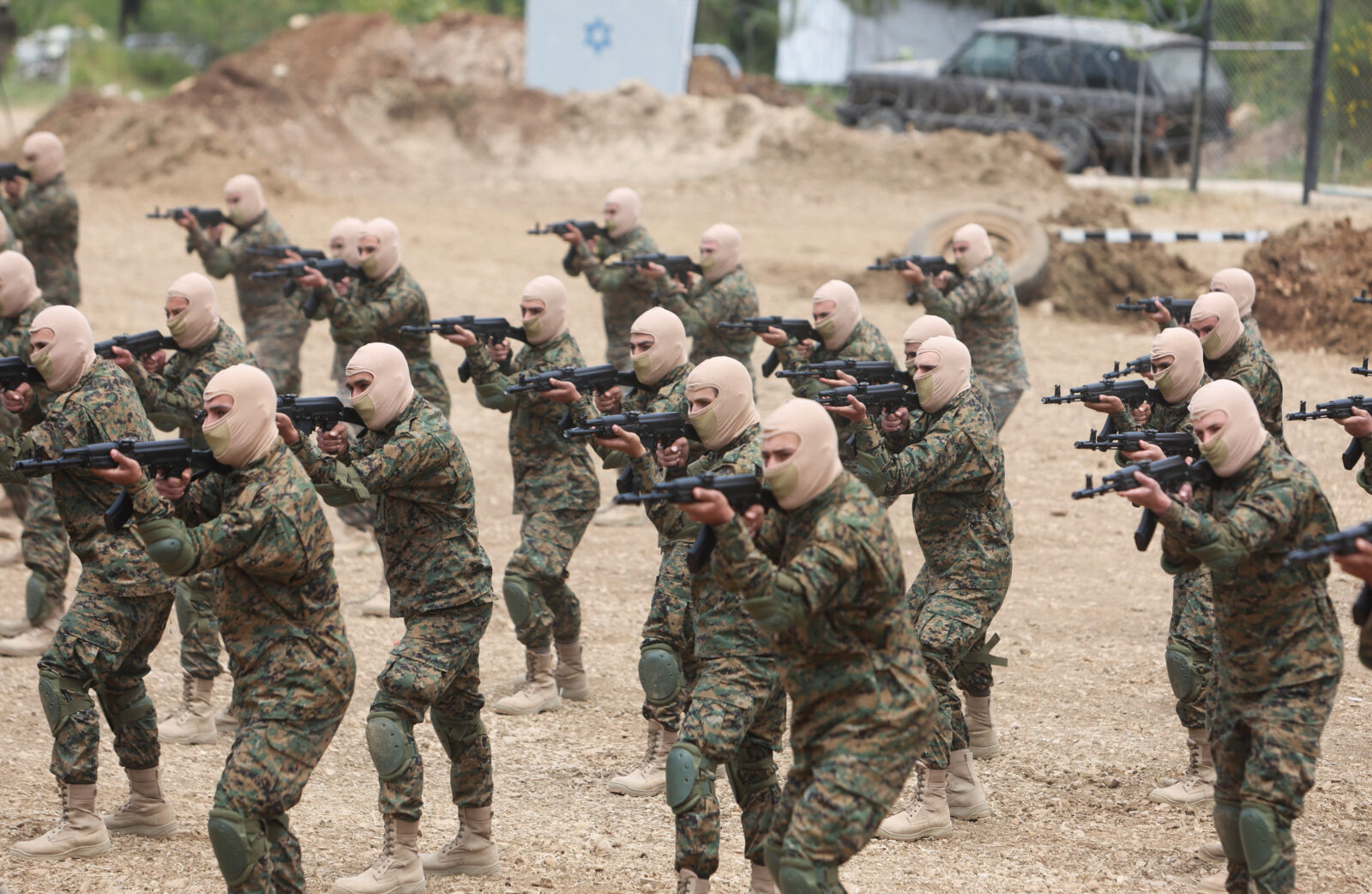
Refugees and displacement in Lebanon
Lebanon has long been a host country for refugees, with an estimated 487,000 Palestinian refugees living in the country as of 2022, and nearly 785,000 Syrian refugees as of 2023.
Additionally, around 7,000 individuals remained internally displaced within Lebanon as of 2020. Now with the Israel’s recent airstrikes and calls for evacuations, approximately 200,000 Lebanese are estimated to have been displaced.
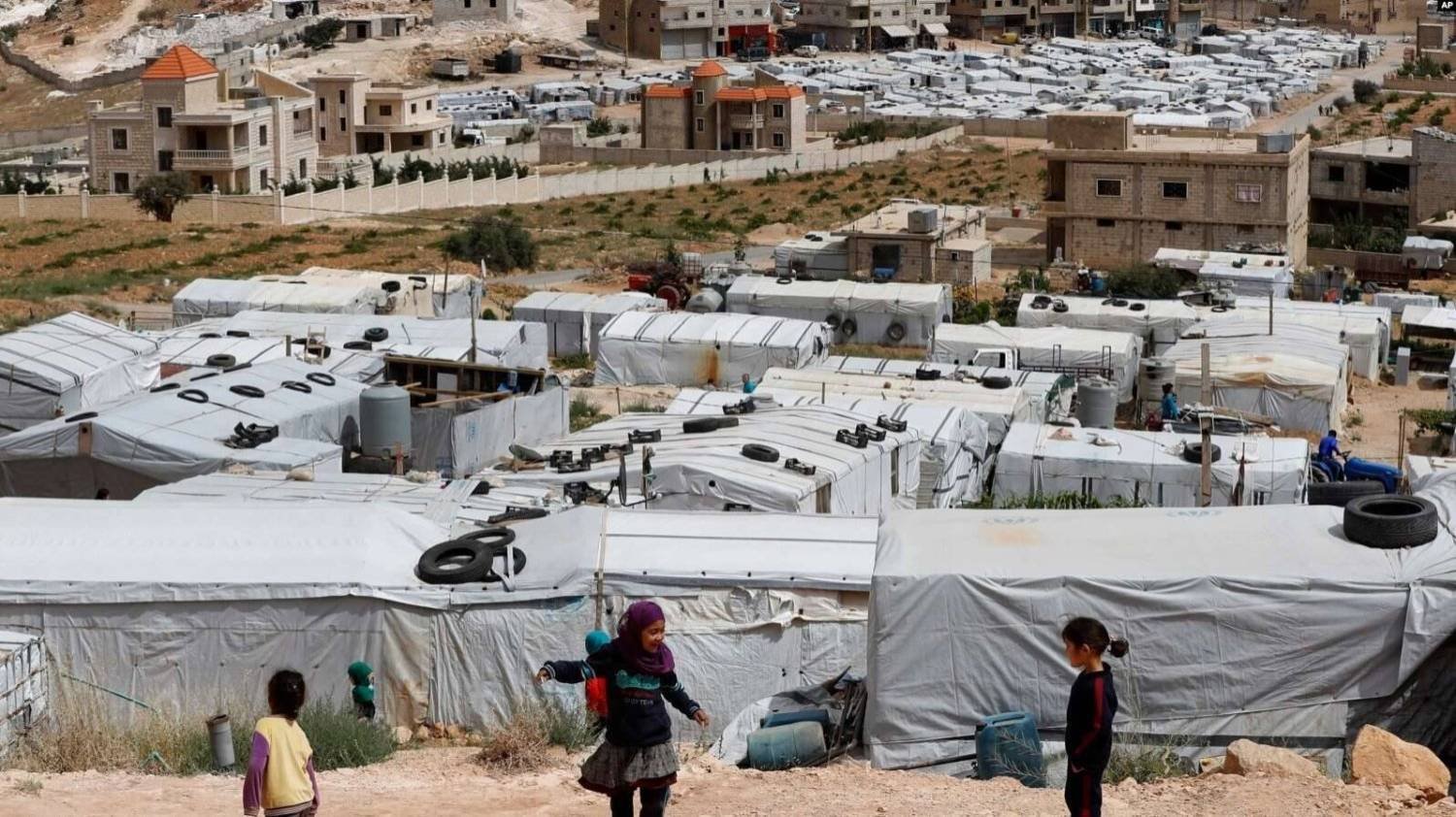
Human trafficking and illicit drug trade
Lebanon has struggled with human trafficking, particularly as it remains on the U.S. State Department’s Tier 2 Watch List for 2024. The country has not demonstrated sufficient progress in eliminating trafficking, leading to concerns from international human rights organizations.
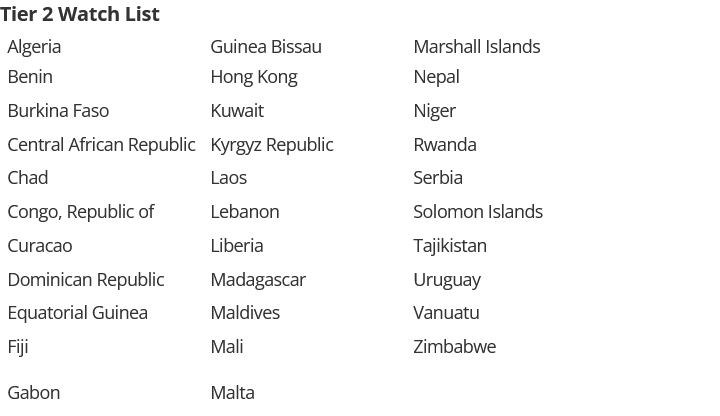
Traffickers exploit women and girls from South and Southeast Asia and an increasing number from East and West Africa in domestic servitude in Lebanon. According to a nongovernmental organization (NGO), more than 250,000 migrant domestic workers were in Lebanon in 2023.
Despite the ongoing economic crisis, NGOs reported recruitment agencies continued to aggressively recruit foreign national domestic workers, particularly from Nigeria and the Philippines. However, an NGO estimated approximately 50,000 migrant workers left Lebanon between the onset of the pandemic and the end of 2022.
The government issued 39,237 visas for migrant workers in 2023, compared with 34,198 visas for migrant workers in 2022, 23,036 in 2021, 9,409 in 2020, and 33,075 in 2019.
Since cross-border fire between Hezbollah and Israel began in October 2023, some employers in southern Lebanon have abandoned their migrant domestic workers in their homes to escape the violence. This has left the workers more vulnerable to exploitation, abuse, and injury.
In addition, Lebanon is a known source country for amphetamine tablets, primarily captagon, which are smuggled to Gulf countries such as Saudi Arabia, Qatar and the UAE. The illicit drug trade remains a significant concern for both domestic and international security.

